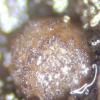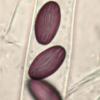
23-09-2023 14:08
 Laurent Bonneau
Laurent Bonneau
Bonjour, j'ai trouvé ces ascos sur Laissées de s

22-09-2023 18:10
 Marc Detollenaere
Marc Detollenaere
Dear Forum,On black remains, probably stromatized

20-09-2023 18:51
Ismael WindIs this hypomyces broomeanus? It was growing on he

15-09-2023 15:54
Jean-Luc RangerJe pense à un Dasyscyphus, 0,6 mm, asques 65 x5µ

19-09-2023 22:57
 Edvin Johannesen
Edvin Johannesen
In Tilia, Quercus, Corylus forest on calcareous so

19-09-2023 10:46
Margot en Geert VullingsWe found these ascomycetes in a damp ditch, most l

17-09-2023 18:22
 Bernard CLESSE
Bernard CLESSE
Bonsoir à toutes et tous,Pourriez-vous m'aider à

27-08-2012 15:23
Marja PennanenHi,finding Desmazierella is not easy. I've been lo

16-09-2023 16:21
 Marc Detollenaere
Marc Detollenaere
During a walk in a mixed forest , one of my friend
Ascobolus crenulatus ?
Laurent Bonneau,
23-09-2023 14:08
 Bonjour, j'ai trouvé ces ascos sur Laissées de sanglier en Gironde.
Bonjour, j'ai trouvé ces ascos sur Laissées de sanglier en Gironde. Spores 9,8-14,6 x 5,8-7,8 microns
Asques: 103-175 x 10,2-15 microns
Excipulum médullaire sphero-imbriqué.
Les dimensions sporales me conduisent à Ascobolus crenulatus.... ?
Michel Delpont,
23-09-2023 14:14

Re : Ascobolus crenulatus ?
Salut Laurent.
Oui, ta détermination est correcte.
Michel.
Laurent Bonneau,
23-09-2023 14:15

Re : Ascobolus crenulatus ?
Merci Michel





